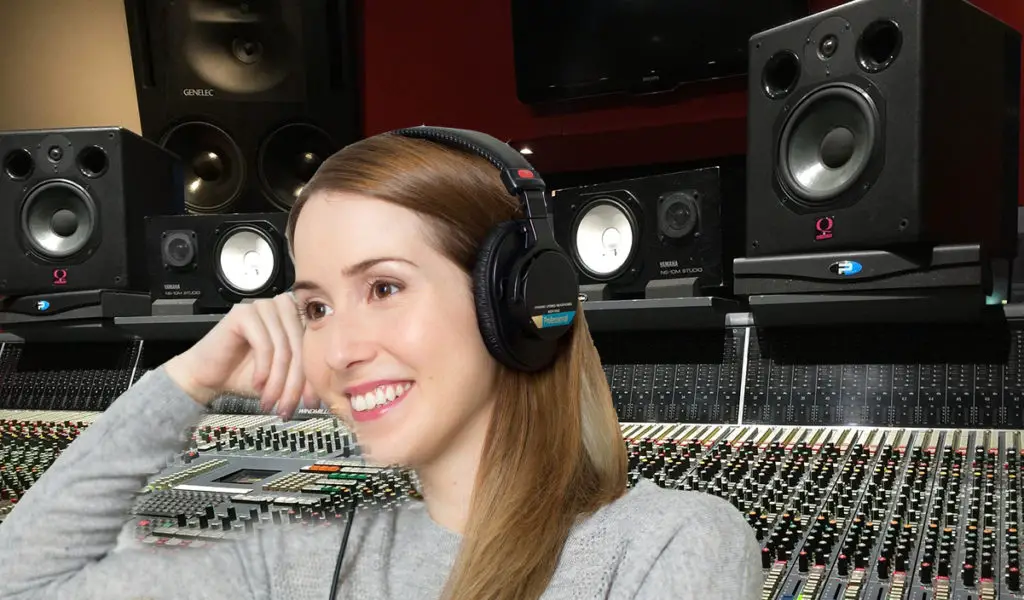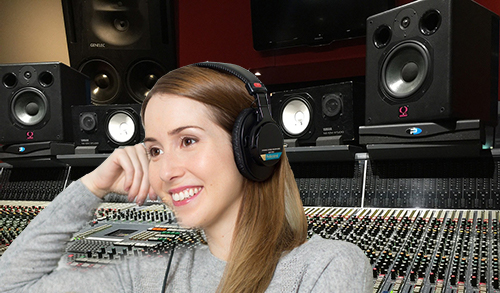Studio monitors are designed for use in a studio setting, where they can provide an accurate reproduction of the sound being recorded. However, this does not mean that they cannot be used as speakers for listening to music.
Can studio monitors be used as regular speakers?
Studio monitors can be used as regular speakers. In general, studio monitors will have a more transparent audio quality, adding less color to the sound, while HiFi speakers are customarily designed to make the music sound as good as possible.
In fact, many people find that studio monitors provide a more accurate and nuanced sound than traditional loudspeakers. The enhanced sound quality is because studio monitors are designed to eliminate any coloration or distortion of the sound, allowing you to hear the music as it was intended to be heard.
As a result, if you are looking for a speaker system that will give you the most accurate representation of your music, then studio monitors may be the right choice for you.

Studio Monitors vs. Normal Speakers: What’s The Difference?
Regarding sound quality, there is no way to generalize what constitutes a studio monitor vs. an everyday speaker. There are studio monitors that are flattering and ones that are transparent, and there are Hi-Fi speakers that are flattering and ones that are transparent. So it’s entirely based on the sound signature of the particular speaker you want to use. But here is a general summary.
What’s The Difference Between Studio Monitors and Normal Speakers?
Studio monitors typically have a flat frequency response, which means that they produce an accurate representation of the audio signal. On the other hand, regular speakers are not always designed for accuracy and may color the sound in various ways.
Studio monitors, in general, are going to be more transparent than audiophile-quality speakers, so they are not quite as pleasing to the ear. This is important in a studio setting, where the goal is to produce a recording that accurately represents the original source material.
The goal of monitoring is not to provide a consistently pleasant listening experience but rather to reveal the audio quality of the recording or mix. The good, the bad, and the ugly. It is essential for studio monitors to produce an accurate sound so you can hear and understand not only what sounds good but also what is incorrect and what has to be changed.
Normal speakers can color the sound, and not all speakers are meant to be precise. This can be desirable in some cases, but it is important to be aware of the difference when making your purchase.
The sound of many consumer speakers often increases the bass and/or the treble frequencies. These frequencies are emphasized for a punchier, more colorful tonal balance.
In combination with other tone characteristics, this approach can make music sound more thrilling. However, it is not what the mix sounds like in reality.
If you make critical EQ and level balance decisions based on a pair of hyped-up speakers, the resulting mix may sound appealing in that room, but it will not elsewhere. In fact, the mix will likely sound dull on more accurate playback systems.
Ideally, the equalization on studio monitors is set flat. The engineer may record and mix songs without any coloration from the speakers because of the flat EQ. In regular speakers, the speaker’s frequency response has been EQ’d to color the sound and accentuate specific desired frequencies.
Keep in mind that studio monitors often have useful extra features like built-in amplifiers and EQ switches for room correction. These additional features will allow you to adjust the EQ if desired and will allow you to change it the way you want for your specific room.
Secondly, studio monitors are typically also used for nearfield listening, meaning in the range of 3 to 6 feet. However, if you get larger studio monitors, which have larger speakers, and monitors with a more significant dispersion, this is less of a factor as they can fill a whole room with sound.
So, in summary, the two types of speakers are built for distinct purposes. Normal audio speakers are designed to produce a pleasing sound. In contrast, studio monitors are designed to provide an accurate sound field while mixing and engineering the audio to create a finished product.
Are Speakers And Studio Monitors The Same?
While there are a few differences between speakers and studio monitors, the two terms are sometimes used interchangeably. Typically we may think of a speaker as a device used to playback audio from an amplifier, while a monitor is used in the production of audio. Are speakers and studio monitors the same?
Studio monitors are a subset of speakers. Studio monitors are a specific type of speaker designed to produce a flat frequency response for audio production purposes. In contrast, speakers are used in many applications: car audio, headphones, earbuds, laptops, cell phones, etc.
Studio monitors are speakers that are meant to be used when in the studio environment in order to hear what’s in your audio. Speakers can be used at home or in the studio. Still, the main difference between studio monitors and regular speakers is that regular speakers are built for music listening purposes while studio monitors are engineered for engineering and recording purposes.
Studio monitors (also called reference monitors) are loudspeakers in speaker enclosures specifically designed for use by audio engineers, producers, and musicians to listen for accuracy, mixing, and mastering purposes. They can be passive or active speakers.
As stated earlier, studio monitors are designed with accuracy in mind. They use different materials for construction, have a flat frequency response curve, low harmonic distortion, and are capable of reproducing the entire audio spectrum with minimal coloration or added effects to the tone/sound.
Can I Use Studio Monitors To Listen To Music?
Studio monitors are specifically designed to produce a flat frequency response for audio production purposes. Engineers and musicians use them in order to hear the sound as it will be played back on other systems.
Can you use studio monitors to listen to music?
Studio monitors can be used to listen to music. Using Studio monitors will give you an accurate picture of what the artist intended the music to sound like. They do not color the sound like speakers that have been EQ’d for regular home or car playback systems.
This makes them ideal if you’re an audiophile who wants their music experience to be accurate and unaltered by any speaker’s natural coloring of the sound.
You can’t go wrong using the same type of equipment used to record and master the music you’ll be listening to. Granted, your studio monitors probably won’t be as high quality as a professional studio, but it’s a good start.
Studio monitors provide flat frequency response, detailed and faithful reproduction of the recording with very few opportunities to alter the signal. This will allow you to discover details that are in the recording but just can’t be heard with standard speakers.
One thing you need to keep in mind is that, because of the transparency and accuracy, this system is quite unforgiving of low-quality audio tracks, mistakes by the audio engineer during mastering, and low bitrate sound files.
Songs that sounded okay in previous consumer systems may sound too bad to be enjoyed through studio monitors.
Bottom line: If you want pure sound, there’s no better way to get it than with a professional system using studio monitors. If you’re searching for colored sound, even with this sort of system, there’s usually an EQ you can use.

Are Studio Monitors Good For Karaoke?
Studio monitors provide an accurate and faithful reproduction of the recording. So, do studio monitors work well for karaoke?
In general, studio monitors are not good for Karaoke because they do not get as loud (Studio Monitors: 110 dB vs. Karaoke Speaker: 125-130 dB), and they do not have a wide dispersion angle needed to fill the room.
Studio monitors are often used for nearfield (close-distance) volume levels when sitting 3-6 feet away from the speakers. They aren’t meant to be used for public address (PA) systems. They are good-sounding speakers, but their primary use is in recording studios at lower volumes.
Studio monitors are not typically designed for listening at a distance like you would when doing karaoke in front of a large audience. So, although they can technically be used for karaoke, they may not be the best option if you’re looking for something that will fill a room with sound.


